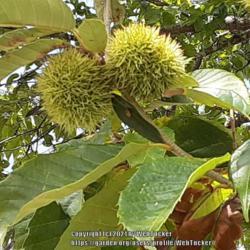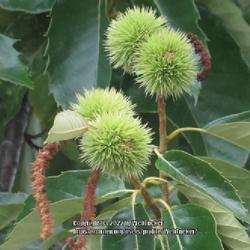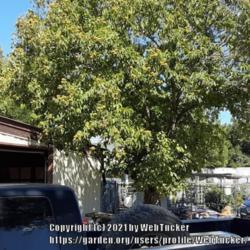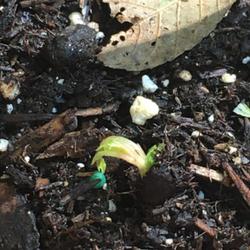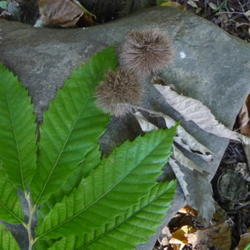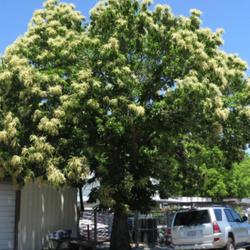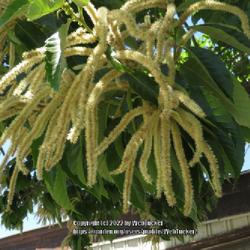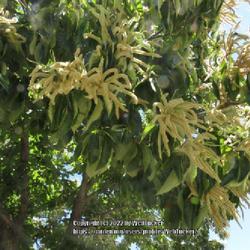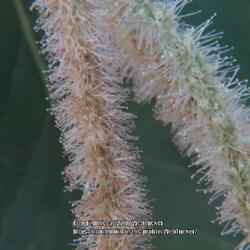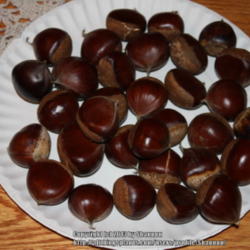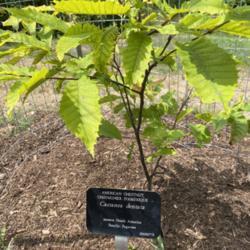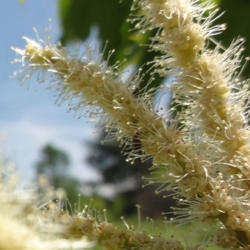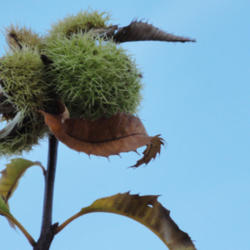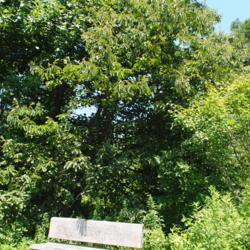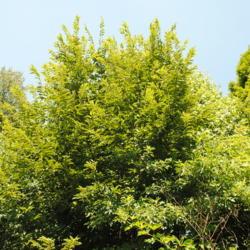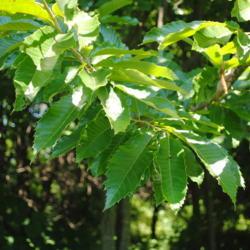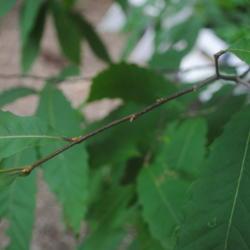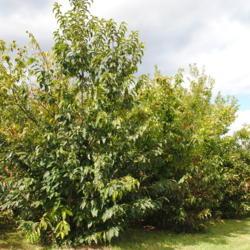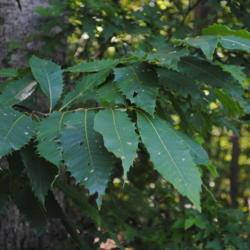Posted by
ILPARW (southeast Pennsylvania - Zone 6b) on Nov 26, 2017 7:48 PM concerning plant:
The American Chestnut was a very common tree in the eastern US that was know to grow up to about 120 feet in the Appalachians, though usually it was more about 50 to 75 feet high and wide.The American Chestnut was hit hard by the Chestnut Blight from east Asia back in the 1920's, after some Asian Chestnuts were planted in the Bronx Zoological Park in 1903, and about 99% or more died off, though there are sprouts that still come up from old tree stumps and grow for some years before the fungus kills them back down. A very few did survive, having natural resistance in various spots. These American survivors are being propagated to bring forth pure American trees that have good resistance to the blight.The American Chestnut Society has interbred the American species with the Chinese with a number of back crossings to now approaching trees that will be 15/16th American and will have resistance to the disease. Also it has been found that a gene from wheat inserted into chestnut cells gives resistance to the fungus by giving the tree an enzyme that breaks down the acid chemical (oxalic acid) from the fungus that causes damage. Therefore, the tree will be coming back in the near future. Some are being planted now. (In the 1950's a large American Chestnut in Ohio was discovered that was well resistant to the blight among a grove of dying and dead trees; some budwood was sent to a Dr. Robert Dunston in North Carolina who bred the stock with some cultivars of Chinese Chestnut and backcrossed some with parent American and Chinese Chestnuts and came up with the Dunston Hybrid Chestnuts that probably are about 2/3rd American on average, that are more upright and straight like the American, but more spreading with bigger nuts like the Chinese.) The American Chestnut species grows about 2 feet/year and lives over 200 years. Its native range is from Maine down to central Mississippi and as far west as areas in Indiana and southern Michigan. The leaves, buds, and stems of this American species are glabrous, meaning hairless, though there can be a little hair on the midrib underneath. The leaves are 5 to 11 inches long and 1.75 to 2 inches (to 3 inches) wide and the leaf is widest in the middle area. The large teeth on the margins are sort of hooked or curved. The twigs are smooth, hairless, reddish-brown with small white lenticels. The Smooth, reddish-brown buds are pointed or longer than wide and stick out from the stem. The 2 to 3 nuts in the spiny capsules are sweet and 1/2 to 1 inch wide. (The Chinese Chestnut that is occasionally planted around, has at least hair on the veins underneath the leaves and has some hair on the buds and stems. The Chinese species normally is shorter, often multi-leadered, and more wide spreading with larger nuts of 3/4 to 2 inches wide.)
